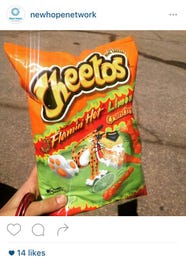How 4th graders think about healthy foodHow 4th graders think about healthy food
A foray into an elementary school classroom sheds light on how children think about healthy, and unhealthy, food.

Let’s get one thing straight: I would make a horrible elementary school teacher. Perhaps it’s due to my lack of experience with kids—I was the youngest in my family and rarely babysat—but corralling legions of children into seats and trying to teach them something seems just too difficult. High school? Sure. Anyone under 10? Uh, I’m scared.
But when I received an invitation to talk about food writing and healthy eating at a local elementary school, I accepted. It was Career Day, and I was asked to teach two classes about, well, whatever I wanted.
Despite my trepidations, I accepted immediately. What better way to espouse the importance of eating well than to enter the lion’s den? The den, it turned out, was a science classroom that held 15 students—and they were instructed to take notes.
But while I was the one reading aloud the hard-to-pronounce ingredients in Flamin’ Hot Cheetos and then comparing them to Bare Snack’s two-ingredients Simply Banana Chips, it was I who got the education that day. I stepped out of my natural produc t-packed desk and conducted secret anthropological research to what 4th (and 5th) graders think about healthy food. Here’s what I discovered.
t-packed desk and conducted secret anthropological research to what 4th (and 5th) graders think about healthy food. Here’s what I discovered.
Snacks are missed opportunities
Kids know that junk food means pizza, hot dogs and burgers, and desserts like candy and ice cream—all pretty obvious examples. But snacks between meals seem to be a more nebulous area. When I asked for examples of junk food, no one mentioned chips, white pretzels, Goldfish or even the bright-orange bag of Cheetos I was holding in my hand.
Lesson for the natural industry: Emphasize nutritious, low-sugar, clean-label snacks suitable for school lunch. (Read: packable and no peanuts.)
Kids love sugar
This is obviously not surprising news. But in the classroom, I saw this truism firsthand. After talking about healthy products versus junk food products, I dished out samples. Would the students enjoy dried banana chips dusted with cinnamon? Or baobab fruit bites, made with ultra-sweet blood orange and pomegranate fruit concentrates that taste like gummy bears? The latter, of course.
Lesson for the natural industry: Let’s wean kids off of sugar! This is a harrowing challenge for food manufacturers: How to create a product that children will eat and ask for, but that doesn’t contain sugar? Is it possible to curtail children’s taste buds to prefer lower-sugar foods? I challenge food brands to try.
Inspire healthy eating with the “now"
Lots of food writing in the natural industry involves scare tactics. If you eat candy every day, you’ll get type 2 diabetes; eating meat hurts animals. But while highlighting the negative effects of junk food has a time and place, the students seemed to perk up more when I connected eating healthy to performing well in soccer, dance, horseback riding, gymnastics, football and more.
Lesson for the natural industry: While preventive health is a vital part of the conversation, illuminating how eating well can improve how you feel right now is an even more powerful message.
About the Author
You May Also Like





